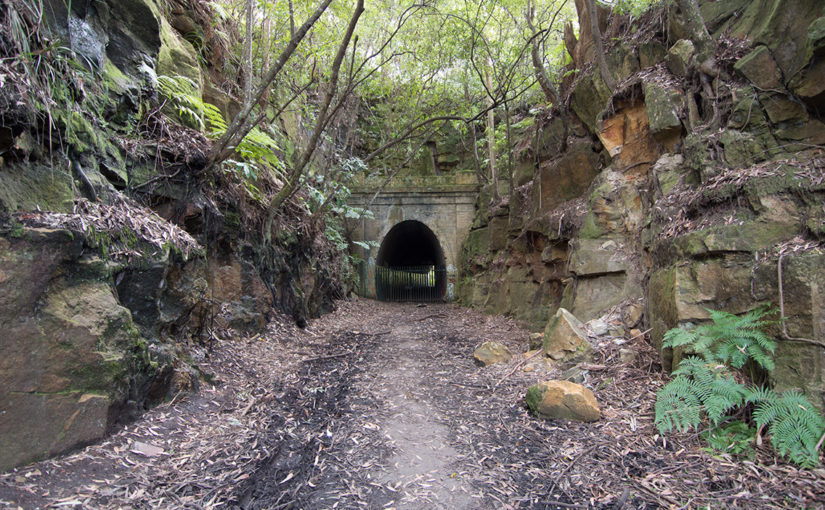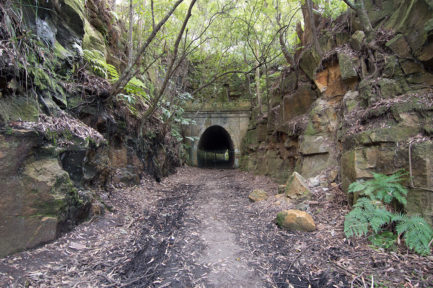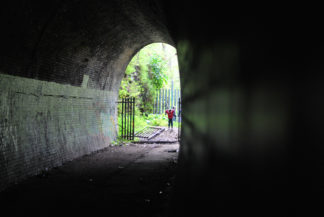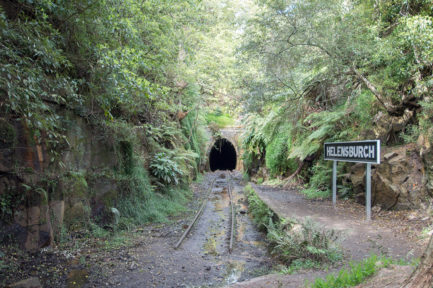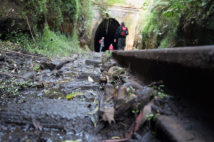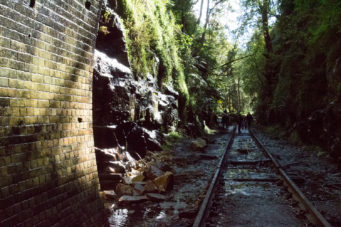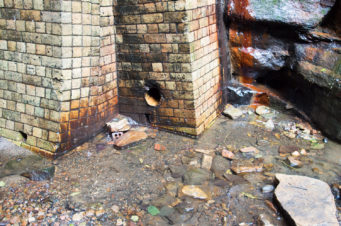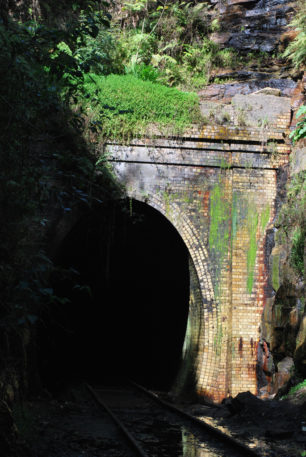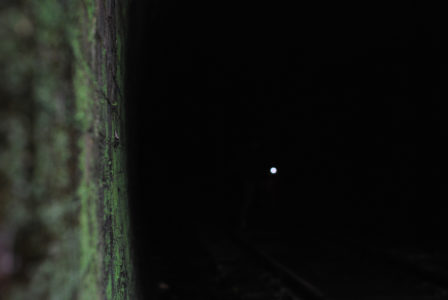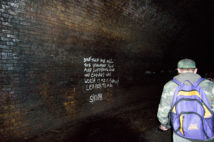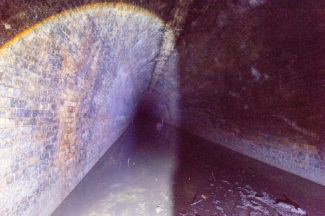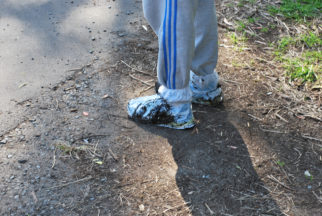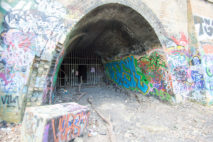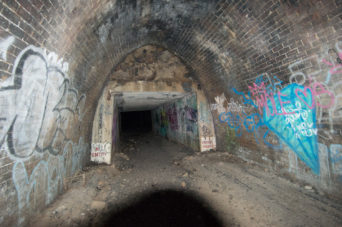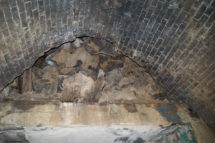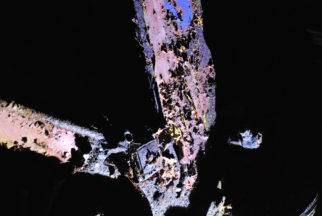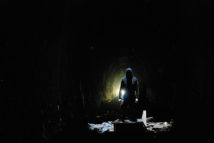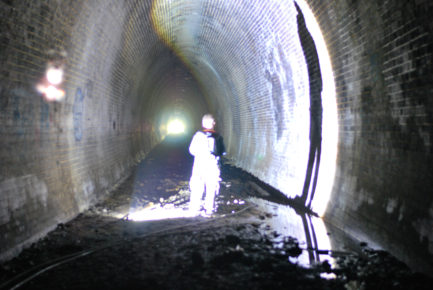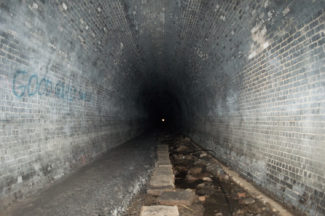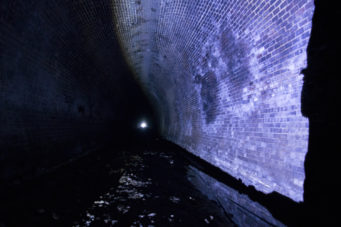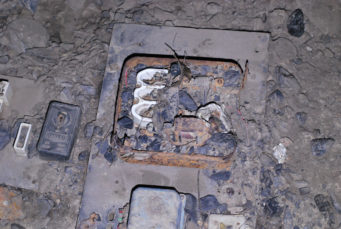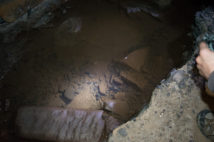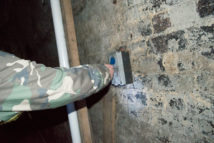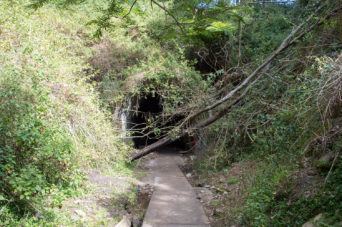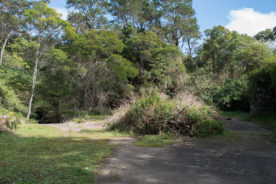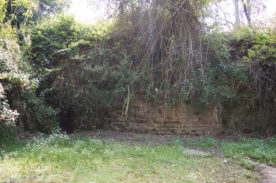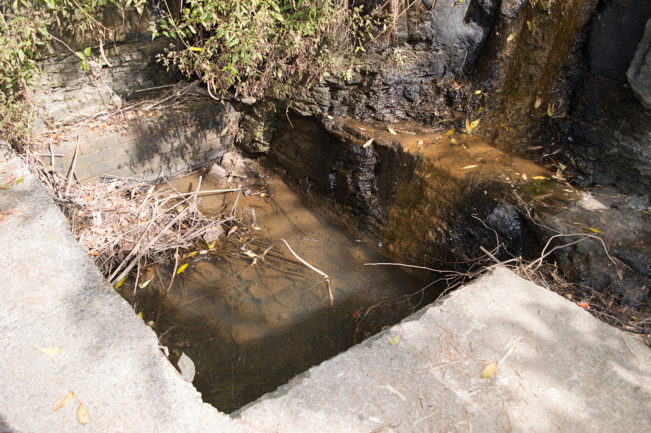These tunnels are located in Helensburgh, NSW. There are six tunnels all up, but on this trip we only saw the three. The two near the Helensburgh Station and the one in Otford which is the longest of the set.
The railway line south of Sutherland to Wollongong was built between 1884 and 1886. The section of line between Waterfall and Otford passed through rugged country, much of which is in the Royal National Park. So difficult was the terrain, a number of tunnels had to be built. Most of these are no longer in use, having been replaced by longer, straighter tunnels on a more direct route.
[Source]
You can check out the old platform and two of the tunnels by parking at the current rail station and walking back down the road. The old station is down a short track directly opposite the tunnel you will see as you drive up to the new train station. If you are going into the tunnel near the old station, I would recommend wearing some gumboots. Trust me. On this trip we managed to walk a few hundred metres into it. In the days after it was abandoned, it was turned into a water reservoir. Despite efforts to drain it, it remains flooded. It’s pretty muddy, dark, cold and wet in there. But there are glow worms! 🙂
The last photo in that set was taken in the darkness at the edge of the underground lake. I have brightened it in photoshop so we can see it stretch off into the distance. It’s more than I saw while I was in there. I think its pretty cool hehe.
The next tunnel shown below is the longest of the lot and not in walking distance of the tunnels above. So it was back into the cars for a short drive.
If you are visiting, I would suggest driving up Chellow Dene Ave and park about half a km from the end. The last part of this road is a single lane and has peoples drive ways on it, so don’t park there. Walk straight up the road and into the tunnel.
This tunnel is a long one. 1.6km long, dark and it is dangerous. So take it slow, take a good torch and good shoes. The ground is worn, uneven and full of holes.
At the beginning of the tunnel you will an arch topped with rubble. This was built after the army blew up the tunnel in a demolition practice during the war. It was reopened and the arch built to hold it all up. You can also see from the photos below how full the entrance is of debris. The alcoves shown below are meant to fit a human in case they needed to retreat from a train.
Eventually it opens up and you are standing in a massive tunnel. It is truly an epic bit of work. As you pass the arch and round the only corner, you see nothing but a far off pin prick of light signifying the end. Soot still coats the intricate brick work and the ground has been worn away in parts by erosion. The old sand stone drain runs up the floor for the length of the tunnel and serves as the safest route to follow carefully.
Half way or there about is an old air shaft with a bathtub at the bottom. Further along from this is a decaying old excavator rotting into the ground. The floor of the tunnel is very uneven and worn, allowing pools of water to form. In these (if you are quick with your torch) you can find yabbies (for non-Australians these are small fresh water crayfish).
Toward the exit is what I suspect are the remains of the mushroom farm people have spoken of. If it is, then it is also long abandoned. Past this and outside the end of the tunnel is a largish clearing that shows the foundations of some buildings that were once there. Nothing much else to see so we headed back in and then off for some food from nearby Wollongong.
These tunnels are also photographed by what I suspect is every single person in Australia. There are many, but they are all so very pretty. Check out this simple Google image search for some amazing pictures of this place. [Link]

